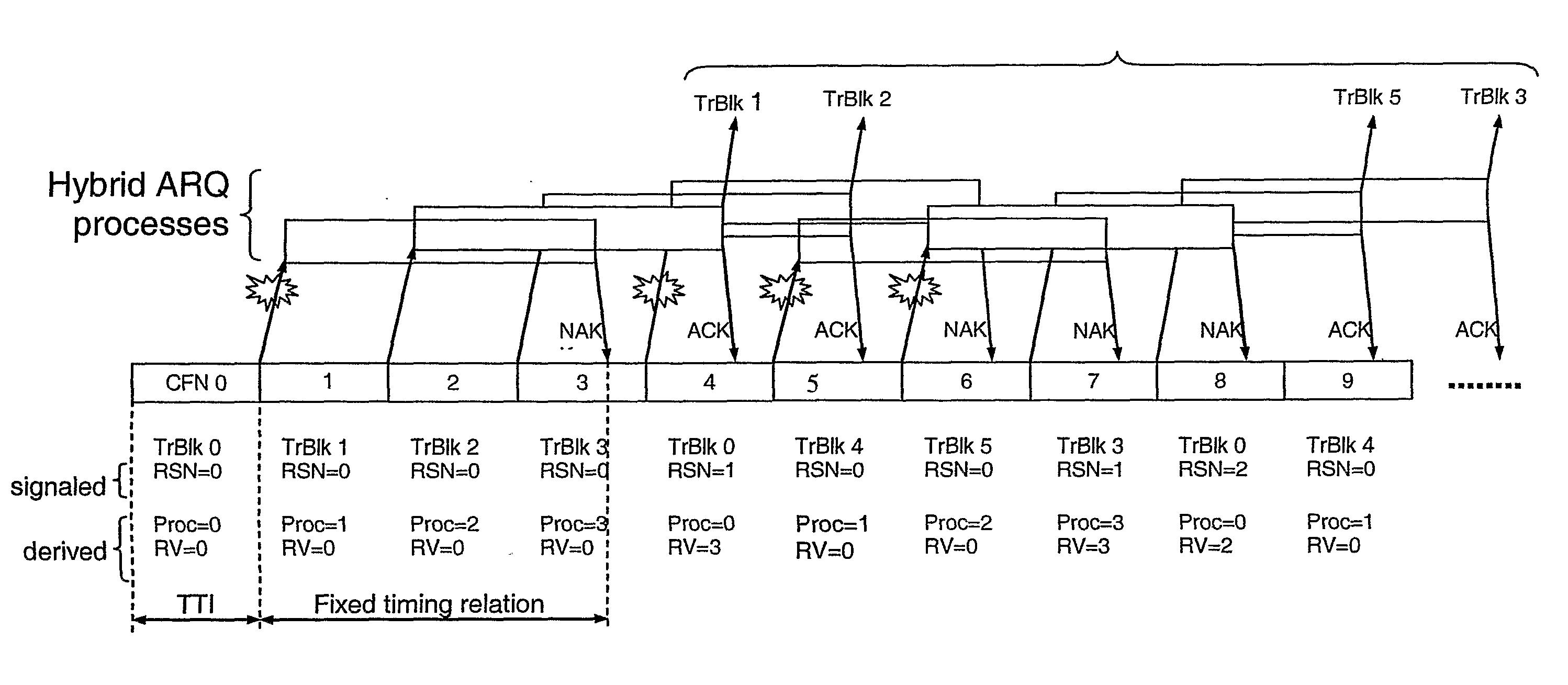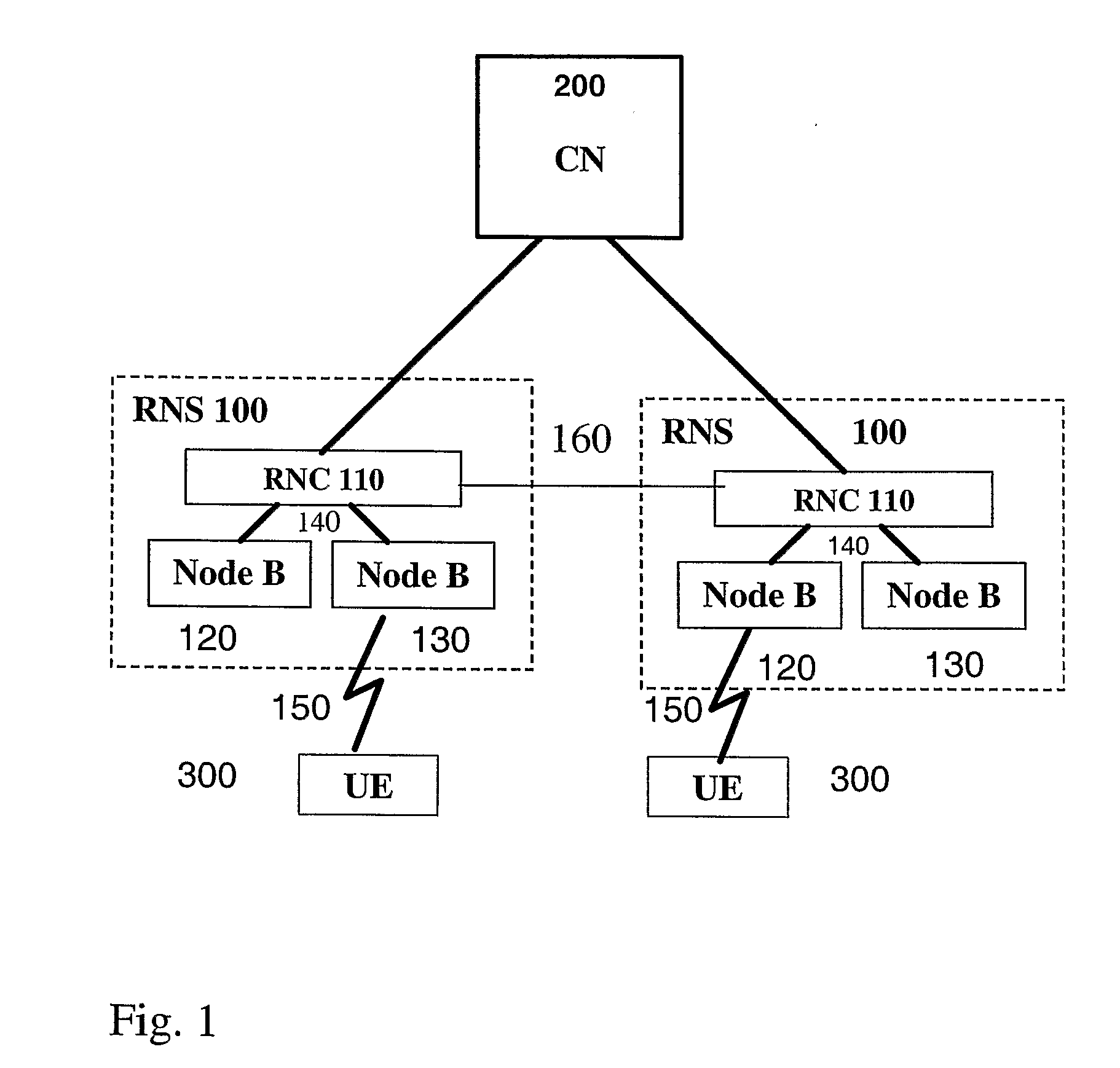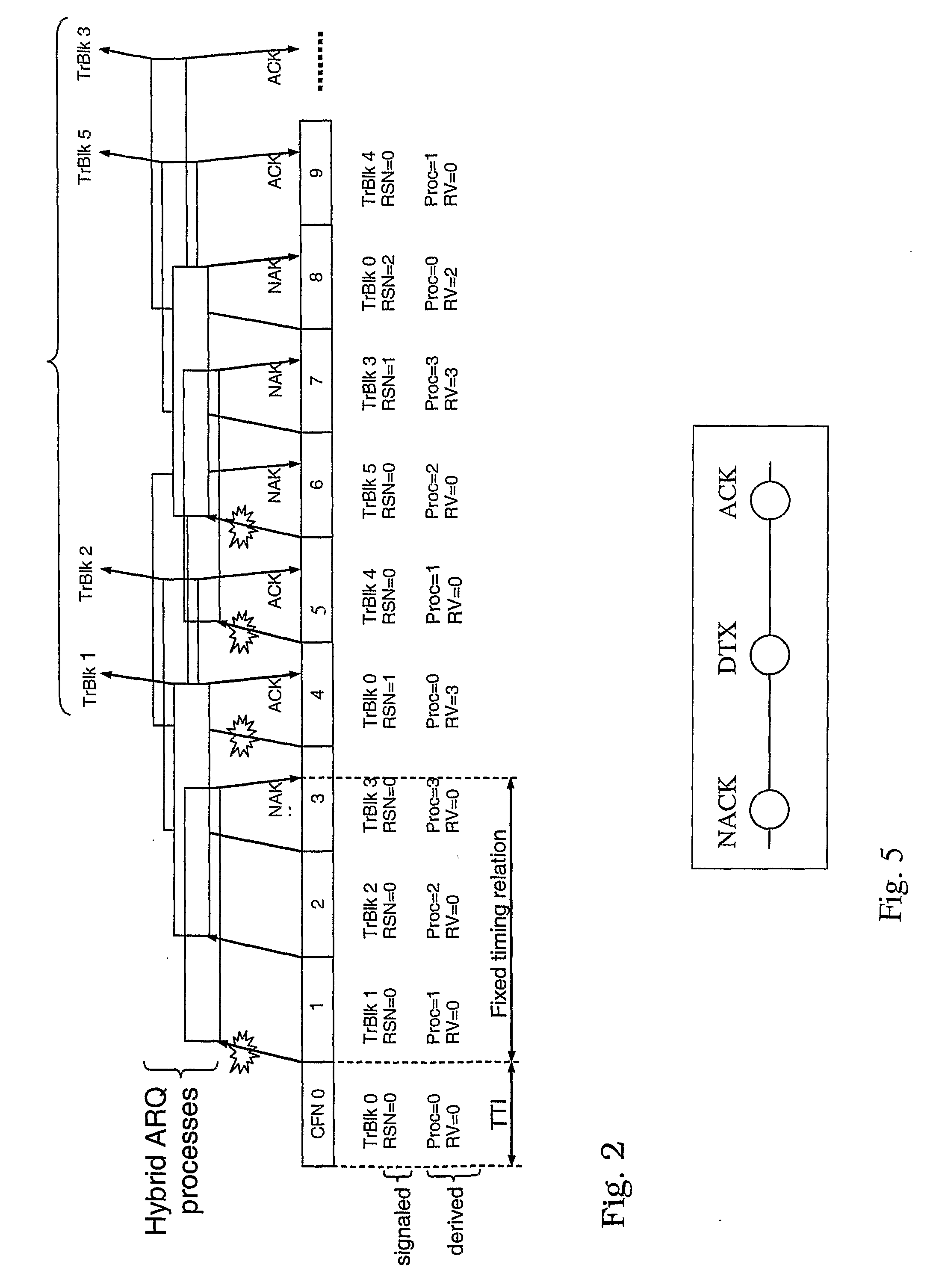Method, Receiver And Transmitter For Improved Hybrid Automatic Repeat Request
a technology of automatic repeat request and receiver, applied in the field of arrangement, can solve the problems of insufficient reliability of harq, and insufficient reliability of harq, and achieve the effect of indirect effect on harq reliability and efficient feedback
- Summary
- Abstract
- Description
- Claims
- Application Information
AI Technical Summary
Benefits of technology
Problems solved by technology
Method used
Image
Examples
Embodiment Construction
[0057]The present invention will be described more fully hereinafter with reference to the accompanying drawings, in which preferred embodiments of the invention are shown. This invention may, however, be embodied in many different forms and should not be construed as limited to the embodiments set forth herein: rather, these embodiments are provided so that this disclosure will be thorough and complete, and will fully convey the scope of the invention to those skilled in the art.
[0058]The present invention relates to an improved HARQ realization and particularly to an improved HARQ realization e.g. for the E-DCH uplink in WCDMA network, for the downlink channel in HSDPA, HS-DSCH, or for the uplink or downlink channels in the Long Term Evolution of the UTRAN. It should however be noted that the invention concerns any system with HARQ and in particular for HARQ realized with multiple interleaved stop-and-wait HARQ processes. Further, the present invention relates to a HARQ receiver a...
PUM
 Login to View More
Login to View More Abstract
Description
Claims
Application Information
 Login to View More
Login to View More - R&D
- Intellectual Property
- Life Sciences
- Materials
- Tech Scout
- Unparalleled Data Quality
- Higher Quality Content
- 60% Fewer Hallucinations
Browse by: Latest US Patents, China's latest patents, Technical Efficacy Thesaurus, Application Domain, Technology Topic, Popular Technical Reports.
© 2025 PatSnap. All rights reserved.Legal|Privacy policy|Modern Slavery Act Transparency Statement|Sitemap|About US| Contact US: help@patsnap.com



